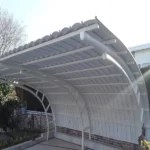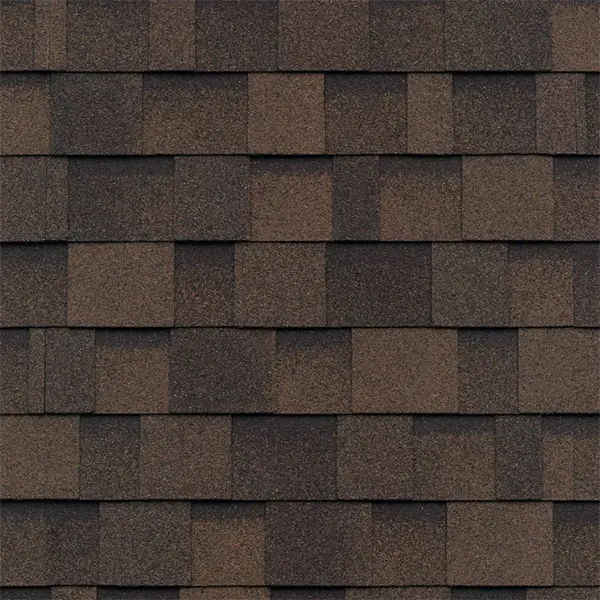Introduction of Plaxis software
rose roofing: Plaxis is a software used to analyze deformations and stability in soil orientation projects (geotechnical engineering). Usually, in important geotechnical problems, an advanced behavioral model is required to model the nonlinear and time-dependent behavior of soils depending on the target. With this software, it is possible to model phased excavation and earthworks with different loading conditions and boundary conditions using 6-node and 15-node triangular elements.
This software is designed based on Finite Element method. Analysis of structures such as tunnels, embankments, mines, pits stabilized with different methods such as nailing, anchoring, mutual restraint, truss guard structure, top-down construction, sheet pile, Berlin wall and diaphragm wall, foundations improved by different methods such as deep soil mixing methods (DSM), high pressure injection (jet grouting), concrete and metal piles, vibrating sand column Dynamic compaction, micropiles, reinforced soil (geosynthetics) are possible using this software.
Some applications of Plaxis software
Some applications of Plaxis software
Pit stability analysis by Plaxis 2D software – Ista Sazeh Engineering Construction Company
Well stability analysis by Plaxis 2D software
Tunnel design by Plaxis 2D finite element software – Ista Sazeh Company
Tunnel design by Plaxis 2D finite element software
History of PLAXIS software
Introduction of Plexis software – 1987 The first version of Plexis program was made by order of the Department of Water Resources Management of the Delft University of Technology (Delft), the Netherlands, and the reason was that at that time, the Netherlands was looking to build an earthen dam on soft and low-lying land. and they had encountered some challenges in this regard, so they ordered the creation of such a program and this was the beginning of a revolution in geotechnical software. In 1993, the capabilities of this software increased and it was able to reach world fame and receive approval from several prestigious institutions, including CUR (Center for Civil Engineering Research and Code).
Applying extensive load on the tunnel in Plaxis 2D software
Applying extensive load on the tunnel in Plaxis 2D software
Plaxis in two-dimensional space
Among the capabilities of Plexis in two-dimensional space, we can mention plane strain analysis, axial symmetric analysis and stability analysis. The analysis of the boundary conditions of the water flow and the analysis of the boundary conditions of the model geometry are also possible with this software. In the two-dimensional version of Plexis, the consolidation process and initial pore water pressure can be simulated. Loads can be applied in two ways: control load and control displacement. Calculating the reliability coefficient by reducing C-Ф is also one of the other capabilities of this software in two-dimensional space.
Plexis software covers various behavioral models such as Mohr-Columb, hyperbolic hardening, softening and creep softening. By using these models and applying interaction, it becomes possible to analyze the problems of stability and deformation of soil and rock in Plexis. In this software, it is possible to use various elements such as sheet, joint, rotary springs and contact elements in the modeling process.
By simulating the groundwater level in Plexis, hydrostatic and non-hydrostatic issues of pore pressure in the soil can be analyzed. In this software, the construction and drilling process is modeled by activating or deactivating the model elements in the calculation stage. 2D meshing and 3D model creation in Plexis is automatic. Layer by layer analysis in the stability issues of slopes, dams and tunnels is among the capabilities of this software.
Plaxis in 3D space
The 3D version of Plexis is presented in the form of Foundation and Tunnel software, which has more limited features than the 2D version. 3D design and analysis of tunnels and foundations is done using these two software. The tunnel simulation in this software is in such a way that the tunnel section is made in one plane and repeated in another dimension. Therefore, it cannot be considered completely three-dimensional, and the 2-and-a-half-dimensional simulation of the tunnel and similar structures is a more appropriate definition of its function.
Plaxis 3D Foundation is used in the analysis of problems related to foundations. In this software, it is not possible to define and change boundary conditions, change meshing in depth and stability analysis. Also, this software is not capable of simulating geogrids and geotextiles, analyzing the initial pore water pressure, and calculating the reliability factor.
Plaxis 3D software
Plaxis 3D software
Key features of Plaxis software
Analysis of deformations and stability in geotechnical engineering projects
Ability to use Mohr-Columb behavioral models, hyperbolic hardening model, cam-clay softening model and creep softening model
The possibility of modeling the construction and drilling process by activating and deactivating members (elements) in the calculation stage
Ability to analyze layer by layer in the stability of slopes, dams and tunnels
Plexis software can be introduced as one of the powerful software in the field of civil engineering, soil studies, which has a wide range of applications. There are different editions of PLAXIS software, which differ in terms of the features used in them. Among these features, we can refer to the features intended for the user.
Introduction of Plexis software – in the two-dimensional edition (version) of Plexis software with the title















No comment